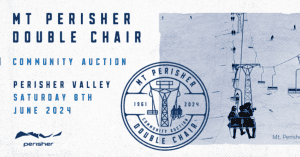The UK White Xmas Explained

Words by:: Aaron Cook – mountainwatch.com Meteorologist.
Anyone guilty of dreaming of a white Christmas for Europe this year is probably too scared to admit it now, as transport and utility sectors struggle to cope with one of the coldest winters in recent memory.
The snow really got going in the UK on December 16th, but the real drama started a few days later when six Eurostar trains broke down, stranding thousands of passengers either side of the Channel Tunnel.
One British punter is fuming after placing accumulator bets with bookies Ladbrokes that 24 locations across England would experience a white Christmas, only to be told that his winning bets, to the tune of several million pounds, were invalid because a Ladbrokes staff member had incorrectly allowed the accumulator bets on the ineligible White Christmas betting option.
There has been little respite in the New Year. Scores of people, mostly homeless, died in Poland in temperatures as cold as -22°C while avalanches in the Swiss Alps killed 7. In the Norwegian town of Roeros, temperatures dropped to -41°C.
Meanwhile, many ski slopes across Europe have picked up decent snow since New Year’s Day and it looks as if the ski season will only improve..
So what’s the deal with all this cold weather?
First of all, let’s get one thing straight. UK Met Office records show that the UK just had the coldest December since 1995. Although it’s pretty amazing stuff it is not unique. It has happened before and it will happen again.
Secondly, although some parts of the globe have seen recent temperatures more than 10°C below average, other parts are experiencing temperatures up to 10°C above average.
The message to take on board here is that we are observing some fairly rare, but not unheard of, localised weather patterns in Europe.

The culprit immediately responsible for these unusual European weather patterns has been a large high pressure system that was sitting over Greenland. (See Weather Map).
This has had two effects: the obvious one is related to the fact that Northern Hemisphere winds blow roughly clockwise around a high. Because the high is sitting to the west of Europe, this has meant cold northerly winds transporting air to Europe that was quite happily chilling around the North Pole not long ago.
To make matters worse, a series of low pressure systems embedded in this northerly flow have been driven down from the Arctic. As these systems move across the North Sea towards Europe, they pick up moisture from the sea surface which falls out again as snow at the slightest encouragement.
The second key effect of the high pressure system has been preventing warmer air from the south west encroaching on Europe. You can think of a high as a heavy, stable mass of air. In other words, a big fat blob that’s hard to shift. The low pressure systems that traditionally arrive from the west and south-west have beaten themselves to death without making much progress.
So in a nutshell, there have been more cold northerlies and north-easterlies and less mild westerlies and south-westerlies over Europe this winter due to an unusually persistent high pressure system sitting over Greenland. This has led to temperatures well below normal across Europe and increased snowfall for some areas.
More recently, the centre of high pressure has shifted further east, to lie over Scandinavia. It looks as if winds will shift back to southerly over Western Europe for a couple of days, which will warm things slightly. Europeans may then experience a return to normal wintry conditions.







